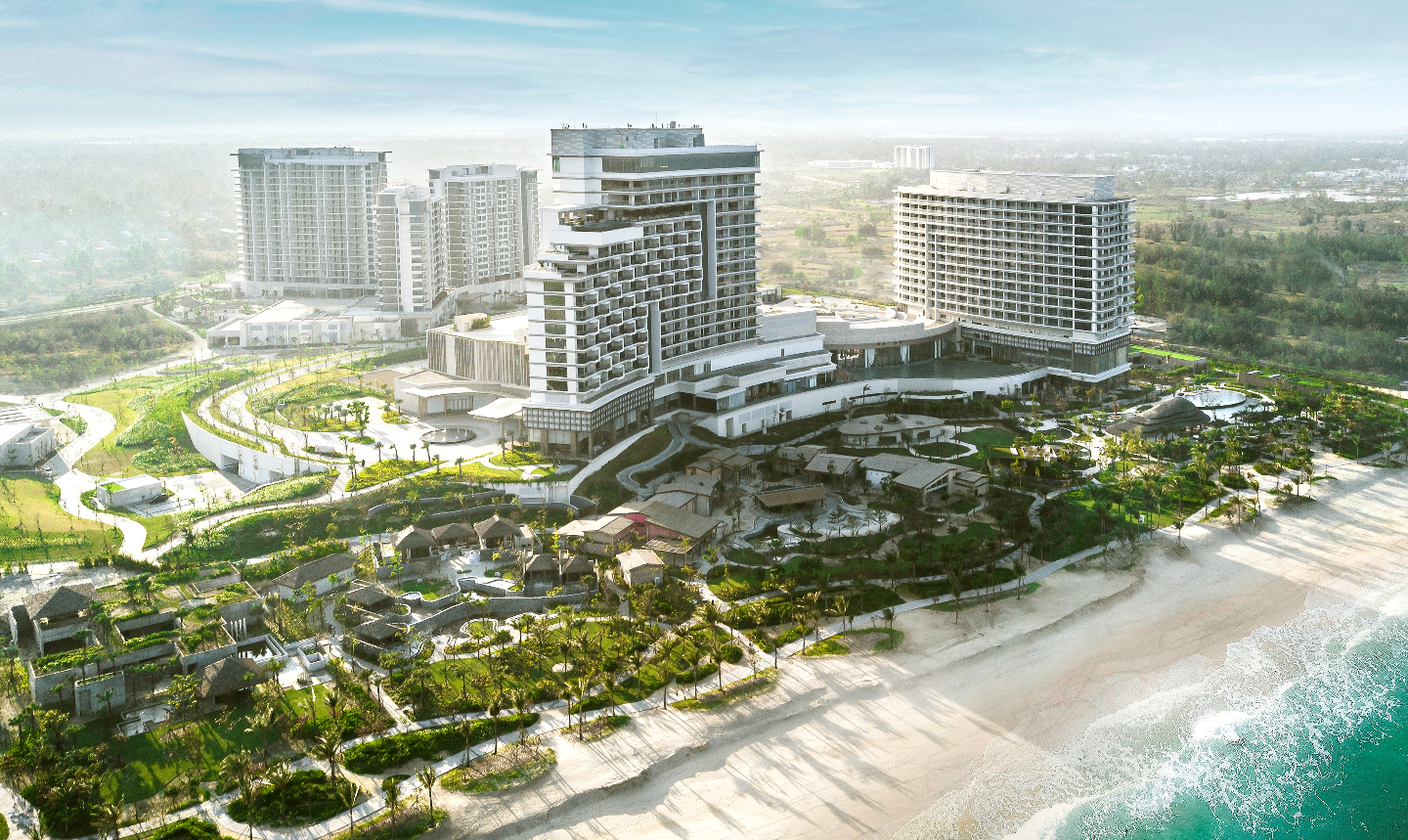
The resort enjoys the best of both worlds, from the scenic countryside with rice fields and roaming buffalo to the relaxing ebb and flow of the sea (Photo: Hoiana Resort & Golf)
Located in Vietnam’s Quang Nam province, Hoi An faces the cool blue waters of the Bien Dông or Eastern Sea. Easily accessible from numerous neighbouring countries, as it lies at the centre of the eastern coastline, the city was considered one of the most important trading ports in Southeast Asia in the 17th and 18th centuries. While it has been mainly influenced by the Chinese and Japanese, much of its culture and heritage comes from the Cham people.
On our visit to this melting pot of influences, we stayed at the luxurious Hoiana Resort & Golf. About 30km south of Da Nang, the resort enjoys the best of both worlds, from the scenic countryside with rice fields and roaming buffalo to the relaxing ebb and flow of the sea, a 10-minute walk from the property.
After checking in and indulging in some pho — no trip to Vietnam is complete without a bowl or two — we are whisked to tour the resort’s crown jewel: the Hoiana Shores Golf Club. Located right next to the hotel, this course was conceptualised by the father of environmental golf course design, Robert Trent Jones Jr. His creations are highly regarded worldwide, especially as they have a low impact on the land and surroundings. Jones Jr’s past works of note include Chambers Bay in University Place, Washington, where the 2015 US Open was held, as well as the location of the 2016 US Women’s Open, CordeValle in San Martin, California.
hoiana_aerialcourse_0643.jpg

The Hoiana Shores course boasts an unspoiled natural terrain, with breathtaking views of the Eastern Sea and Cham Islands in the distance. This 18-hole links course is said to be challenging yet rewarding, and is fit for golfers of all levels. Other than the putt-putt course, what makes this spot extra special is the 6,000 sq m clubhouse that includes the retro-styled 1552 Bistro and cosy Shores Café.
With more than 10 food and beverage offerings, Hoiana Resort & Golf has numerous additional amenities. This integrated hotel features an infinity pool and fitness centre on the 16th floor, the Tranquillity Lounge, as well as a row of stores — such as a convenience mart, Jade & Diamonds by Vietgems, a cashmere and agarwood store, and a bank — which makes it perfectly equipped for guests who would rather not leave the hotel during their stay. Another standout feature is the spacious casino that sports all manner of slot machines, baccarat, blackjack and roulette tables, as well as a premium hall for VIPs.
During our stay, we attended the resort’s Live the Moment launch dinner with media and influencers from all over Southeast Asia. One of the notable sights of the night was the massive Vision Tree art installation decorating the main lobby. In the day, the tree stood tall in shimmering white; in the evening, it was brightened by a colourful array of changing lights.
hasd-hhs-sky_pool_suite.jpg
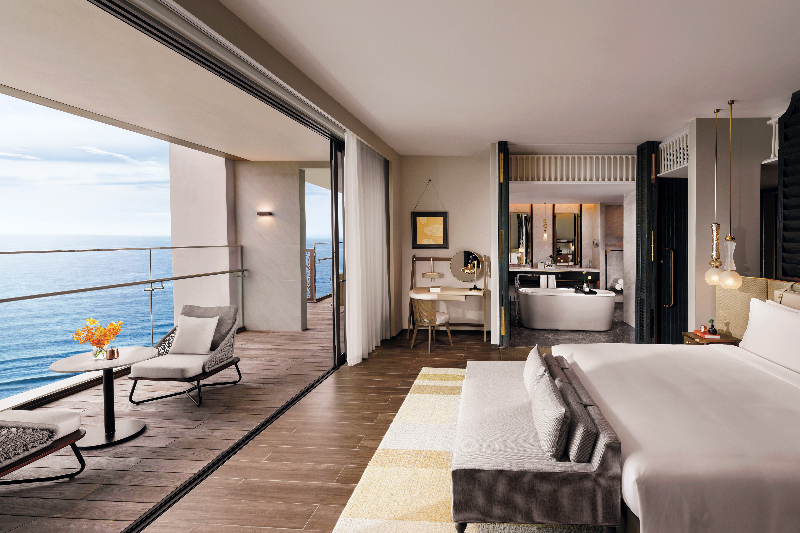
The dinner was held at The Greenhouse, a function space surrounded by greenery. A wall of vibrant lanterns as well as twinkling fairy lights were set up for guests who wished to take photos, giving a magical feel to the ambience. The dinner itself was inspired by the full moon and dishes were named as such. Standout courses included Moon River, a dish of Jerusalem artichoke cream with butter clam, Tra Que Basil oil and chilli toast; and Footprint on the Moon, a Matsusaka steak with Iberico ham, crabmeat, gojuchang, hollandaise and a duo starch mousseline. Enjoying the food and paired wines, guests were serenaded into the night by a local jazz band that played a few Ella Fitzgerald and Frank Sinatra hits.
Another function held during our stay was the White party at the Cove Bar & Grill, where guests were dressed to the nines from head to toe in white. Cocktails were served, including mojitos crafted with a locally made rum called Sampan. The sky temporarily threatened to rain on the open-air buffet, but thankfully, the wind swept the clouds away, making way for an orange-and-purple sunset. From the Cove, guests could marvel at the Hoiana building and amble over to the beach, which had comically sized installations such as enormous beach chairs and a massive beach ball.
The meal from this party was quite unforgettable, as an incredibly long buffet table was set up with mountains of fresh seafood — grilled, raw or boiled. A hefty 40kg tuna was carried in from the sea during the meal. From lobster and prawns to grilled octopus and horn scallop, this banquet was a seafood lover’s dream.
hoi_an_lantern_-_tran_hung_dao.jpg
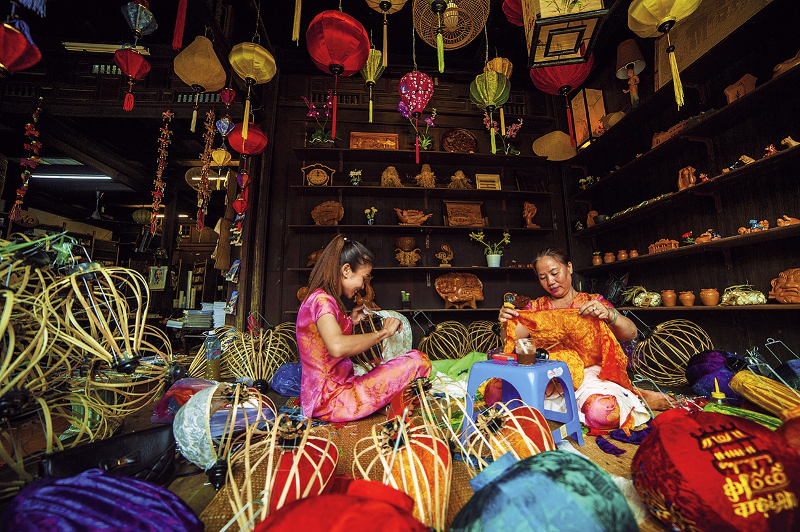
Experiencing Hoi An’s culture
The hotel organised quite a few experiences to help us get to know Hoi An’s heritage and crafts. One afternoon at The Greenhouse, we were introduced to lantern-making master Bùi Quý Phong. He took us through the craft and allowed us to give it a try, patiently explaining each step and encouraging our hesitant attempts. To place delicate pieces of silk onto the bamboo frame was certainly a lot harder than it looked. After a few misshapen and dented lanterns came to life, we were tasked with painting on our pieces what we felt, making it a relaxing and fun experience.
Another fun activity — which probably should be avoided by those with motion sickness — was going for a spin in a “coconut” boat, so-called for its resemblance to half a coconut shell. It is actually made from bamboo. In this case, spin is a literal interpretation as the expert rower will randomly swirl the boat around, creating a sensation similar to the teacup rides at theme parks. Floating towards the mouth of the Thu Bon River, we saw fishermen casting their nets from long boats (an action some of us got to try) as well as people blasting karaoke music. Some fishermen were entertaining a crowd with acrobatic feats while spinning their boat. This fun-filled excursion was capped with a quick motorcycle ride and fresh coconut water.
eco-tourism_-_mai_thanh_chuong.jpg
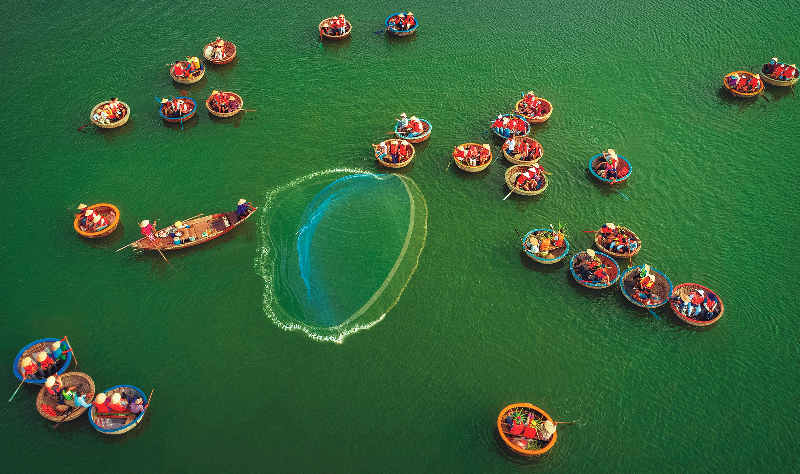
We also visited what was perhaps the most well-known area of this province — Hoi An Ancient Town, sometimes called the Old Town, which was listed as a Unesco World Heritage Site in 1999. It was so declared because it “is an exceptionally well-preserved example of a Southeast Asian trading port dating from the 15th to the 19th centuries”. As you drive through the city, long structures with narrow entrances are a common sight. The original and well-maintained 1,107 timber frame buildings from the 17th and 18th centuries in the Old Town are similarly built.
As the original street plan has been preserved, one can clearly see the fusion of cultures that have influenced its architecture. For instance, you can still walk across the 18th-century Japanese wooden bridge canopied by a traditional pagoda. It has been given a few names — like Lai Vien Kieu (Bridge that Receives Guests from Afar), Cau Nhat Ban (Japanese Bridge) and Chùa Cau (Pagoda Bridge) — but the only physical changes to the structure were made in 1986, when the French flattened the road for cars.
hoai_river_boat_station_-_mai_thanh_chuong.jpg
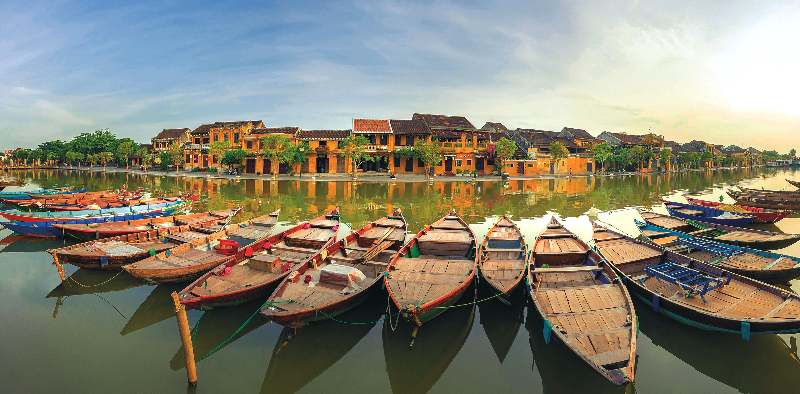
Our guide told us that to preserve the Ancient Town — which is located near the mouth of the Thu Bon River — and allow tourists to explore the area freely, larger vehicles are prohibited at specific times. With only a narrow road and pathway separating shoplots from the river, it was easy to see the convenience of offloading goods at this location in the past. Today, instead of cargo, the long narrow boats carry eager tourists merrily floating colourful lanterns lighting their way. The Ancient Town is the perfect place to shop, eat or have a tailor-made outfit sewn to perfection within a day or two.
As a multi-faceted city, Hoi An even has villages dedicated to one industry, like the fishing village. A short bus ride took us to the Thanh Ha Pottery Village, where residents have been making ceramics for about 500 years. Every corner of the village, which is made up of charming narrow streets, has pottery on display and many homes have red-brick kilns at the ready. Our guide informed us that pottery-making is the main source of livelihood for many of the 23 families in the area, which has a population of about 400. We stop at the Co So San Xuat Gom pottery production house to try our hand at throwing with a two-man pottery wheel. While one person forms the clay, another kicks the edge with his foot to keep the wheel spinning at the right pace. It is safe to say that quite a few interesting creations were made, but only because of the instructor’s vigilance.
pottery_handicraft_-_do_tai.jpg
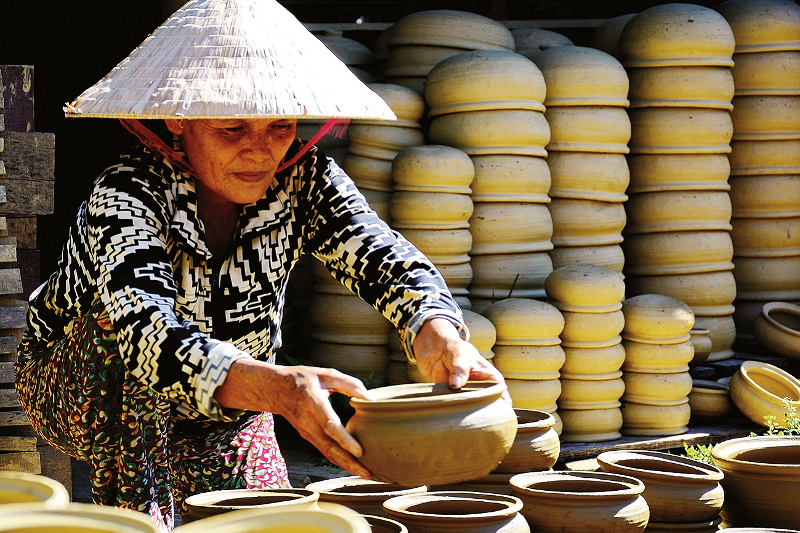
A highlight at the pottery village, other than the numerous coffee shops and incredible range of art to buy, was the Thanh Ha Terracotta Park. It comprises a garden filled with greenery and intricately crafted clay miniatures of world monuments such as the Taj Mahal; and the Clay Gallery, a three-storey building dedicated to artistic works as well as historic artefacts from archaeological sites.
Everything about Hoi An and Hoiana Resort & Golf is full of colour, be it the food or culture. While the city offers exciting nightlife, rich culture and local arts and crafts, the hotel provides sumptuous food, access to a white sandy beach, the ultimate comfort of beautifully designed suites, as well as fun activities in the form of golf, the casino, shopping and more. So, what more could one want? Exploring Hoi An’s history and luxurious amenities was a true treat, one that we hope to relive on our next visit.
This article first appeared on July 4, 2022 in The Edge Malaysia.


